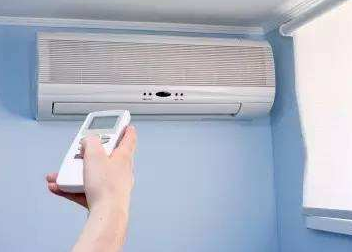Japanese air conditioner manufacturers are expanding their Asian sales network in an attempt to block Chinese competitors with low-cost advantages.
In Indonesia, Daikin Industry occupies a 20% market share in the local household air-conditioning market. The air-conditioning company is striving to consolidate its presence in Indonesia: Daikin plans to increase its number of stores in Indonesia by 20% by fiscal year 2020 to reach 1200. At present, Daikin's stores in Indonesia are mainly concentrated in the Jakarta area, so its store expansion will be mainly located in rural areas of this country.

"We will send employees from Japan to take charge of supplier development," said Yoshihiro Mineno, an executive at Daikin.
Daikin plans to launch air conditioners that consumers think are reasonably priced, such as products that use energy-saving inverter technology.
Currently, only about 20% of households in Indonesia have air conditioning. However, with the expansion of the Indonesian middle class, it is estimated that by 2020, the Indonesian household air-conditioning market will increase by 20% from 2017 to 2.6 million units.
Japanese air-conditioning brands Daikin, Panasonic, and Sharp together account for 50% of the Indonesian home air-conditioning market, but Gree and other Chinese competitors are catching up.
Currently, Daikin's product portfolio includes mass market models priced at approximately US$270, while Chinese competitors are priced at approximately US$180. In order to differentiate itself from its competitors, Daikin will upgrade its installation and maintenance services. The air-conditioning company headquartered in Osaka, Japan predicts that its revenue in Indonesia is expected to increase by 40% over the current fiscal year by fiscal year 2020, reaching 50 billion yen (approximately US$450 million).
In China, Panasonic established a sales company in Suzhou to be responsible for the sales of large air-conditioning systems for apartments and office buildings. More than 200 sales agents across the country will work in the new office. Panasonic will also establish a residential company and showroom for air-conditioning equipment sellers in Suzhou.
In addition, Panasonic will also move the research and development of large-scale refrigeration systems from Japan to Suzhou. In this way, sales can be better connected with research and development, and Panasonic can quickly launch products that meet the needs of the local market.
In the Chinese urban market, sales of large-scale systems installed on the ceiling and connected to room vents have started, especially in newly-built apartments. This air-conditioning system is favored by wealthy consumers because they prefer to design clean rooms. It is predicted that by 2020, the market size of China's large-scale air-conditioning system will grow to approximately RMB 50 billion (approximately USD 7.27 billion), doubling the market size in 2013.
A standard large-scale air-conditioning system for cooling five apartments does not include installation fees, and the market price is approximately US$4,500. Since Midea and other Chinese companies with price advantages have established a firm foothold in China, Panasonic's market share in China is expected to be less than 10%. The main part of Panasonic's business in China includes small household models. Panasonic has a weak product portfolio of large air-conditioning systems, so it has not been favored by Chinese residential builders.
However, Panasonic, which is also headquartered in Osaka, Japan, claims that the company will increase its sales in China by four or five times in the next three years by increasing the added value of the energy-saving and deodorizing functions of the air-conditioning system. "Although we are late, we can use our technical capabilities to defeat Chinese opponents," said Tsutomu Ishihara, head of Panasonic's large-scale air-conditioning business.
According to data from the Japan Refrigeration and Air Conditioning Industry Association, the global demand for air conditioners increased by 8% last year to 110 million sets. As the largest market in Asia, China's demand for air-conditioning has increased by 13%, while demand for air-conditioning in other Asian markets except China and Japan has increased by 5%.
Outdoor Rental LED Display is hot selling product in the led screen market. We usually use Nova MSD300 sending card and MRV328 receving card, other controll system also can be accepted, like Linsin,colorlight and so on.....About the led lamp, we use kinglight led lamp, IC is ICN2038S, refresh rate is 1920hz. We also provide other option if the client need higher quality, like Nationstar led lamp and refresh rate can make 3840hz. This 500x500mm LED display panel can also can make curved led display, ±15° flexible curved option.
Application:
* Business Organizations:
Supermarket, large-scale shopping malls, star-rated hotels, travel agencies
* Financial Organizations:
Banks, insurance companies, post offices, hospital, schools
* Public Places:
Subway, airports, stations, parks, exhibition halls, stadiums, museums, commercial buildings, meeting rooms
* Entertainments:
Movie theaters, clubs, stages.
Outdoor Rental LED Display,P3.91 Led Display,Led Advertising Display,Led Display Panel
Guangzhou Chengwen Photoelectric Technology co.,ltd , https://www.cwleddisplay.com